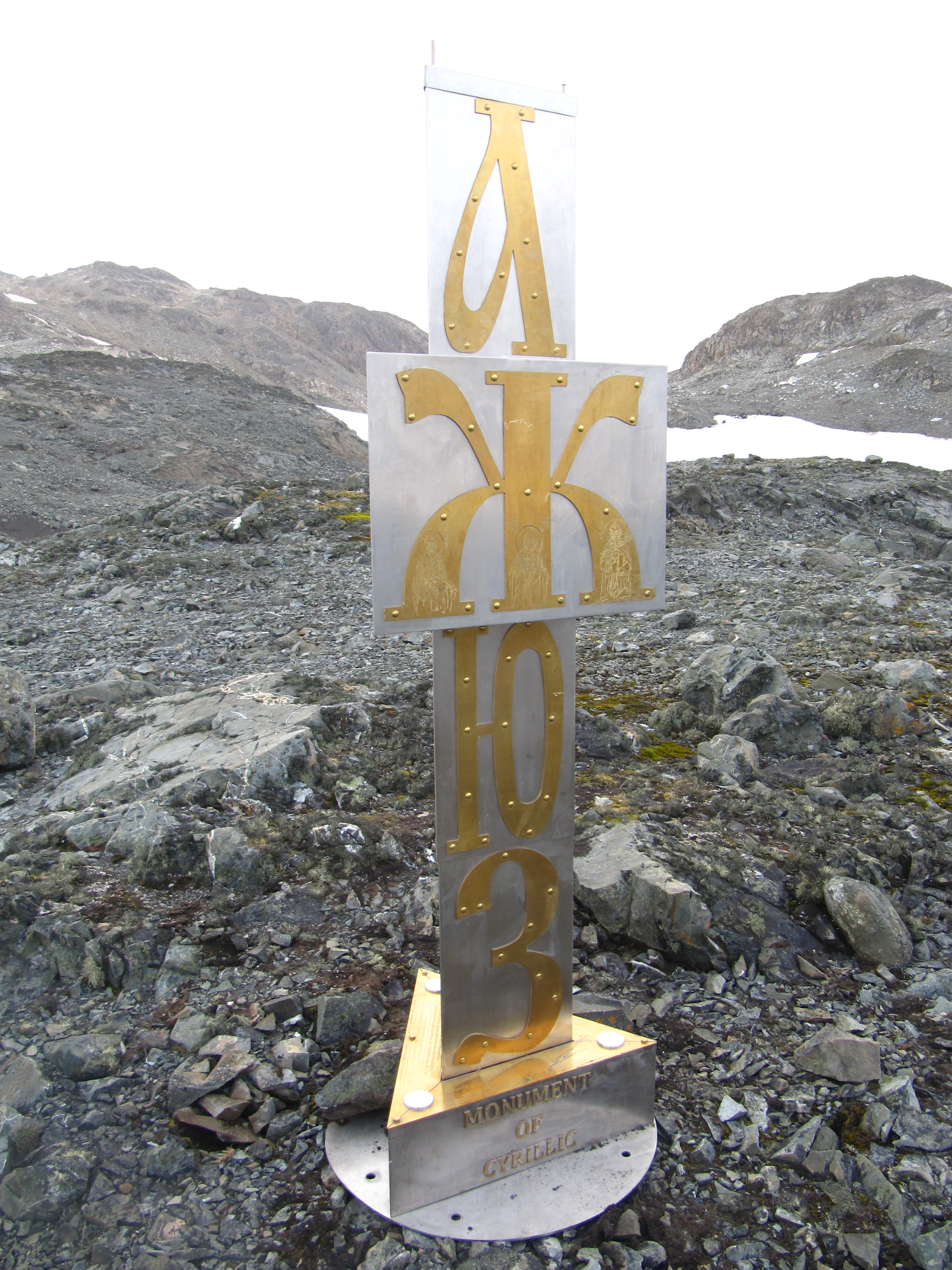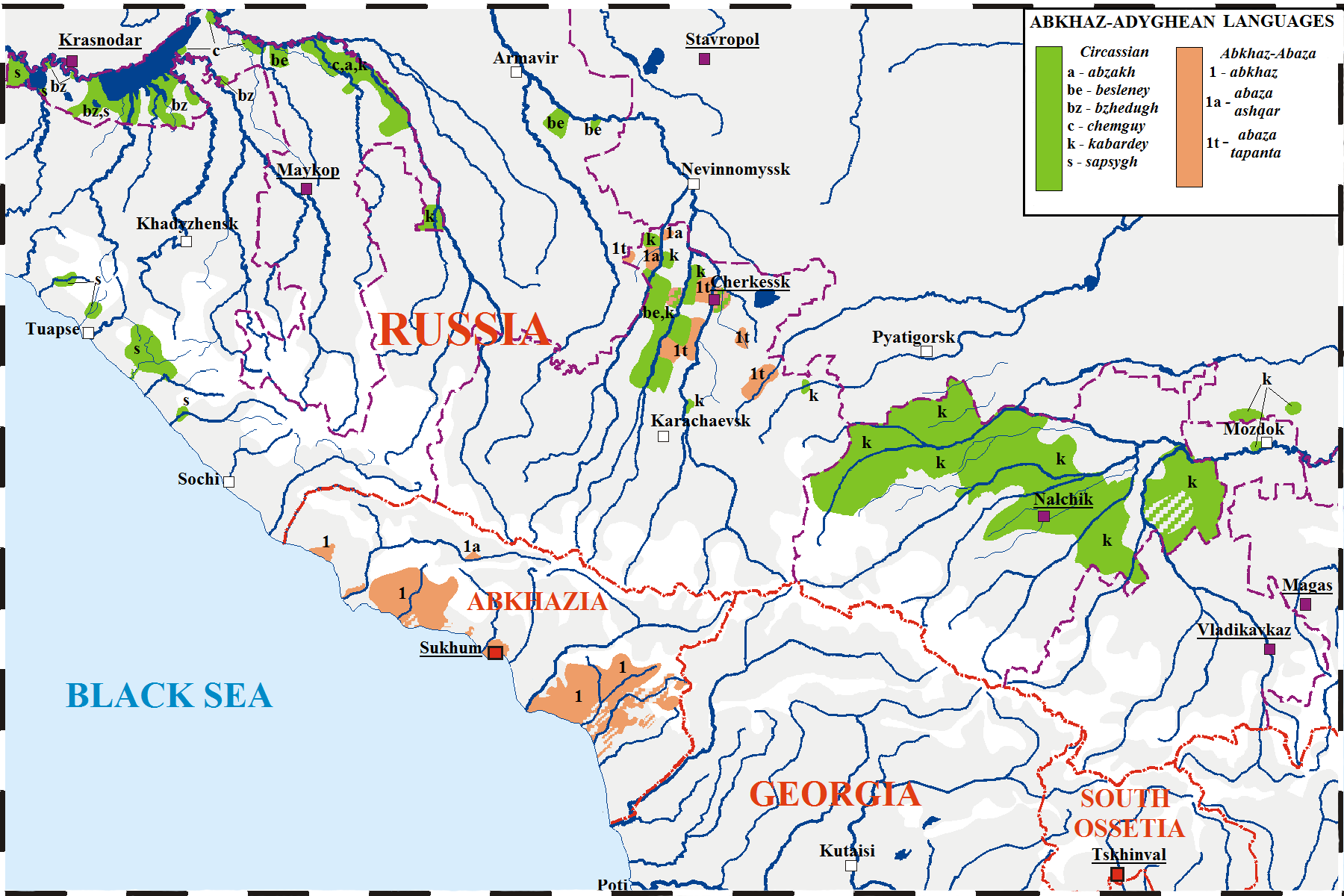|
Abkhazian Che
Abkhazian Che (Ҽ ҽ; italics: ) is a letter of the Cyrillic script. Abkhazian Che is used in the alphabet of the Abkhaz language, where it represents the voiceless retroflex affricate . In the alphabet, it is placed between and . The letter only coincidentally resembles a lowercase Latin letter ' e'. Historically, it's the cursive form of the corresponding letter in the Abkhazian Latin alphabet, where it somewhat resembled a Greek φ. Computing codes See also *Cyrillic characters in Unicode As of Unicode version 15.0 Cyrillic script is encoded across several blocks: * CyrillicU+0400–U+04FF 256 characters * Cyrillic SupplementU+0500–U+052F 48 characters * Cyrillic Extended-AU+2DE0–U+2DFF 32 characters * Cyrillic Extended-BU+A ... * Abkhazian Che with descender References Further reading *Daniels, Peter D. ''The World's Writing Systems.'' Oxford University Press, 1996. {{Cyrillic-alphabet-stub ... [...More Info...] [...Related Items...] OR: [Wikipedia] [Google] [Baidu] |
Abkhazian Che With Descender
Abkhazian Che with descender (Ҿ ҿ; italics: ) is a letter of the Cyrillic script. Its form is derived from the Cyrillic letter Abkhazian Che (Ҽ ҽ ) by the addition of a descender. Abkhazian Che with descender is used in the alphabet of the Abkhazian language, where it represents the retroflex ejective affricate . Computing codes See also *Cyrillic characters in Unicode *Abkhazian Che Abkhazian Che (Ҽ ҽ; italics: ) is a letter of the Cyrillic script. Abkhazian Che is used in the alphabet of the Abkhaz language, where it represents the voiceless retroflex affricate . In the alphabet, it is placed between and . The letter ... References Cyrillic letters with diacritics Letters with descender (diacritic) {{Cyrillic-alphabet-stub ... [...More Info...] [...Related Items...] OR: [Wikipedia] [Google] [Baidu] |
Cyrillic Script
The Cyrillic script ( ), Slavonic script or the Slavic script, is a writing system used for various languages across Eurasia. It is the designated national script in various Slavic, Turkic, Mongolic, Uralic, Caucasian and Iranic-speaking countries in Southeastern Europe, Eastern Europe, the Caucasus, Central Asia, North Asia, and East Asia. , around 250 million people in Eurasia use Cyrillic as the official script for their national languages, with Russia accounting for about half of them. With the accession of Bulgaria to the European Union on 1 January 2007, Cyrillic became the third official script of the European Union, following the Latin and Greek alphabets. The Early Cyrillic alphabet was developed during the 9th century AD at the Preslav Literary School in the First Bulgarian Empire during the reign of tsar Simeon I the Great, probably by disciples of the two Byzantine brothers Saint Cyril and Saint Methodius, who had previously created the Glagoli ... [...More Info...] [...Related Items...] OR: [Wikipedia] [Google] [Baidu] |
Abkhaz Language
Abkhaz ( ; ), sometimes spelled Abxaz and also known as Abkhazian, is a Northwest Caucasian languages, Northwest Caucasian language most closely related to Abaza language, Abaza. It is spoken mostly by the Abkhazians, Abkhaz people. It is one of the official languages of Abkhazia, where around 100,000 people speak it. Furthermore, it is spoken by thousands of members of the Abkhazian diaspora in Turkey, Georgia (country), Georgia's autonomous republic of Adjara, Syria, Jordan, and several Western countries. 27 October is the day of the Abkhazian language in Georgia (country), Georgia. Classification Abkhaz is a Northwest Caucasian languages, Northwest Caucasian language and is thus related to Adyghe language, Adyghe. The language of Abkhaz is especially close to Abaza language, Abaza, and they are sometimes considered dialects of the same language,''B. G. Hewitt Abkhaz 1979;'' page 1. Abazgi, of which the literary dialects of Abkhaz and Abaza are simply two ends of a dialect c ... [...More Info...] [...Related Items...] OR: [Wikipedia] [Google] [Baidu] |
Voiceless Retroflex Affricate
The voiceless retroflex sibilant affricate is a type of consonantal sound, used in some spoken languages. The symbol in the International Phonetic Alphabet that represents this sound is , sometimes simplified to or , and the equivalent X-SAMPA symbol is . The affricate occurs in a number of languages: * Asturian: Speakers of the western dialects of this language use it instead of the voiced palatal fricative, writing ḷḷ instead of ll. *Slavic languages: Polish, Belarusian, Old Czech, Serbo-Croatian; some speakers of Russian may use it instead of the voiceless alveolo-palatal affricate. *a number of Northwest Caucasian languages have retroflex affricates that contrast in secondary articulations like labialization. *Mandarin and other Sinitic languages. Features Features of the voiceless retroflex affricate: Occurrence See also *Index of phonetics articles A * Acoustic phonetics * Active articulator * Affricate * Airstream mechanism * Alexander John Ell ... [...More Info...] [...Related Items...] OR: [Wikipedia] [Google] [Baidu] |
Dzhe
Dzhe or Gea (Џ џ; italics: ) is a letter of the Cyrillic script used in Macedonian and varieties of Serbo-Croatian ( Bosnian, Montenegrin, and Serbian) to represent the voiced postalveolar affricate , like the pronunciation of j in “jump”. Dzhe corresponds in other Cyrillic alphabets to the digraphs дж or чж, or to the letters Che with descender (Ҷ ҷ), Che with vertical stroke (Ҹ ҹ), Khakassian Che (Ӌ ӌ), Zhe with breve (Ӂ ӂ), Zhe with diaeresis (Ӝ ӝ), or Zhje (Җ җ). In the Latin version of Serbo-Croatian, it corresponds with the digraph dž which, like the digraphs lj and nj, is treated as a single letter, including in crossword puzzles and for purposes of collation. Abkhaz uses it to represent the voiced retroflex affricate . The ligature џь is used to represent the sound. History The letter Dzhe was first used in the 15th-century Romanian Cyrillic alphabet, as a modified form of the letter ч.Maretić, Tom ... [...More Info...] [...Related Items...] OR: [Wikipedia] [Google] [Baidu] |
Abkhazian Latin Alphabet
Abkhaz and Abkhazian may refer to: * Something of, from, or related to Abkhazia, a de facto independent region with partial recognition as a sovereign state, otherwise recognized as part of Georgia * Abkhaz people or Abkhazians, persons from Abkhazia or of Abkhaz descent * Abkhaz language * Abkhazian culture * Abkhazian cuisine * Abkhazi, a princely family in Georgia, a branch of the Anchabadze family from Abkhazia See also * Abasgoi The Abasgoi or Abasgians ( grc, Αβασγοί, Abasgoi, and grc, Ἁβασκοί, Abaskoi; la, Abasci, Abasgi; ka, აბაზგები, Abazgebi; compare Abkhaz ''Абазаа'' "the Abaza people") were one of the ancient tribes inhabi ..., ancient tribe likely the ancestors of the Abkhazians * * {{disambig Language and nationality disambiguation pages ... [...More Info...] [...Related Items...] OR: [Wikipedia] [Google] [Baidu] |
Cyrillic Characters In Unicode
As of Unicode version 15.0 Cyrillic script is encoded across several blocks: * CyrillicU+0400–U+04FF 256 characters * Cyrillic SupplementU+0500–U+052F 48 characters * Cyrillic Extended-AU+2DE0–U+2DFF 32 characters * Cyrillic Extended-BU+A640–U+A69F 96 characters * Cyrillic Extended-CU+1C80–U+1C8F 9 characters * Cyrillic Extended-DU+1E030–U+1E08F 63 characters * Phonetic ExtensionsU+1D2B, U+1D78 2 Cyrillic characters * Combining Half MarksU+FE2E–U+FE2F 2 Cyrillic characters The characters in the range U+0400–U+045F are basically the characters from ISO 8859-5 moved upward by 864 positions. The next characters in the Cyrillic block, range U+0460–U+0489, are historical letters, some being still used for Church Slavonic. The characters in the range U+048A–U+04FF and the complete Cyrillic Supplement block (U+0500-U+052F) are additional letters for various languages that are written with Cyrillic script. Two characters in the block Phonetic Extensions block compl ... [...More Info...] [...Related Items...] OR: [Wikipedia] [Google] [Baidu] |

